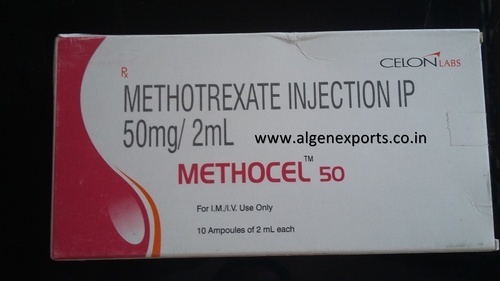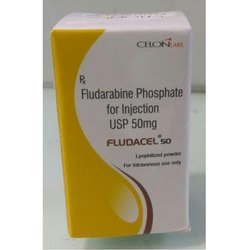
IBANDRONIC ACID Injection
Product Details:
- Enzyme Types Other
- Feature Other
- Application Other
- Storage Instructions AS PER PACK
- Shelf Life 1-2 Years
- Click to View more
IBANDRONIC ACID Injection Price And Quantity
- 30-40 USD ($)/Bottle
- 1 Bottle
IBANDRONIC ACID Injection Product Specifications
- AS PER PACK
- 1-2 Years
- Other
- Other
- Other
IBANDRONIC ACID Injection Trade Information
- Telegraphic Transfer (T/T)
- 10000 Bottle Per Day
- 1 Week
- Free samples available with shipping and taxes paid by the buyer
- AS PER PACK
- Australia Eastern Europe Western Europe Middle East Africa South America Asia Central America North America
- All India
- AS PER COMPANY
Product Description
A bisphosphonate drug called ibandronic acid injection is used to treat and prevent bone-related diseases, especially osteoporosis in postmenopausal women and some cancer-related bone problems. It functions by preventing bone resorption, minimising bone loss, and enhancing bone density. Healthcare personnel often administer the injection intravenously. In patients with osteoporosis, ibandronic acid is beneficial in lowering the risk of fractures and boosting bone density. It aids in the treatment of malignant hypercalcemia and bone metastases in cancer patients. For the injection of ibandronic acid to be used safely and effectively, regular monitoring and appropriate management are required. Flu-like symptoms, gastrointestinal issues, and musculoskeletal pain are examples of frequent adverse effects.
Ibandronic Acid Injection Features & Advantages:
1. Ibandronic Acid belongs to the class of medications known as bisphosphonates and is used to treat conditions that affect the bones.
2. Osteoporosis treatment: It is generally used to slow bone loss, boost bone density, and prevent fractures in postmenopausal women with osteoporosis.
3. Ibandronic Acid assists cancer patients in managing bone problems, such as bone metastases and hypercalcemia of malignancy.
4. Inhibition of Bone Resorption: It functions by preventing the breakdown of bone, preserving bone density and toughness.
5. Administering the injection intravenously ensures that the drug is delivered precisely and under control.
6. Convenient Dosing: To reduce the number of injections needed, ibandronic acid is often provided once every three months for the treatment of osteoporosis.
7. Fracture Risk Reduction: Ibandronic Acid dramatically lowers the risk of fractures in people with osteoporosis by boosting bone density and strength.
8. Ibandronic Acid can help reduce bone pain and enhance quality of life in cancer patients who have bone metastases.
9. Ibandronic Acid has a well-established safety and efficacy profile for the treatment of bone-related illnesses as a result of considerable research.
10. Ibandronic Acid helps to maintain and increase bone health, which contributes to greater skeletal function and mobility in general.
Ibandronic Acid Injection should be administered under the guidance of medical specialists, and patients should be constantly watched for any potential complications or adverse effects. Ibandronic Acid usage should be decided in conjunction with the patient's individual bone health state, medical history, and treatment objectives by the medical team. Throughout the course of therapy, regular monitoring of patient safety and treatment response is necessary.
Ibandronic Acid Injection Applications:
1. Osteoporosis: Postmenopausal women who have osteoporosis are treated with ibandronic acid. Increased bone density, decreased fracture risk, and decreased bone loss are all benefits.
2. Bone problems caused by cancer, including as bone metastases and hypercalcemia of malignancy, are treated with it in cancer patients.
Ibandronic Acid Injection Side Effects:
1. Fever, exhaustion, and muscular aches are just a few of the flu-like symptoms that some patients may encounter.
2. Gastrointestinal Disturbances: During Ibandronic Acid therapy, nausea, vomiting, and abdominal pain are frequent adverse effects.
3. Ibandronic Acid may result in musculoskeletal pain, which includes joint and back pain.
4. Headache: Some people have mentioned headache as a potential adverse effect.
5. Redness, swelling, or soreness at the injection site are possible side effects for some patients.
6. Hypocalcemia: Ibandronic Acid may, in rare circumstances, cause low levels of calcium in the blood (hypocalcemia).
7. Esophageal Irritation: It could induce esophageal irritation, which could result in symptoms like heartburn or trouble swallowing.
8. Osteonecrosis of the Jaw: Ibandronic Acid, an uncommon illness that affects the jawbone, has occasionally been linked to osteonecrosis of the jaw.
9. Atypical Femoral Fractures: Ibandronic Acid use for an extended period of time may raise the chance of atypical femoral fractures, which are unusual thigh bone fractures.
10. Hypersensitivity Reactions: Ibandronic Acid may cause severe allergic reactions in some patients, necessitating rapid medical care.
Ibandronic Acid Injection should only be administered to patients under the strict supervision of trained medical personnel who can successfully handle any potential adverse effects and closely monitor the drug's effects. Ibandronic Acid usage should be decided in conjunction with the patient's individual bone health state, medical history, and treatment objectives by the medical team. Throughout the course of therapy, regular monitoring for adverse effects and treatment response is crucial.
Other Products in 'Anti Cancer Injection' category
 |
MEHADIA TRADELINKS
All Rights Reserved.(Terms of Use) Developed and Managed by Infocom Network Private Limited. |

 English
English Spanish
Spanish French
French German
German Italian
Italian Chinese (Simplified)
Chinese (Simplified) Japanese
Japanese Korean
Korean Arabic
Arabic Portuguese
Portuguese




 Call Me Free
Call Me Free